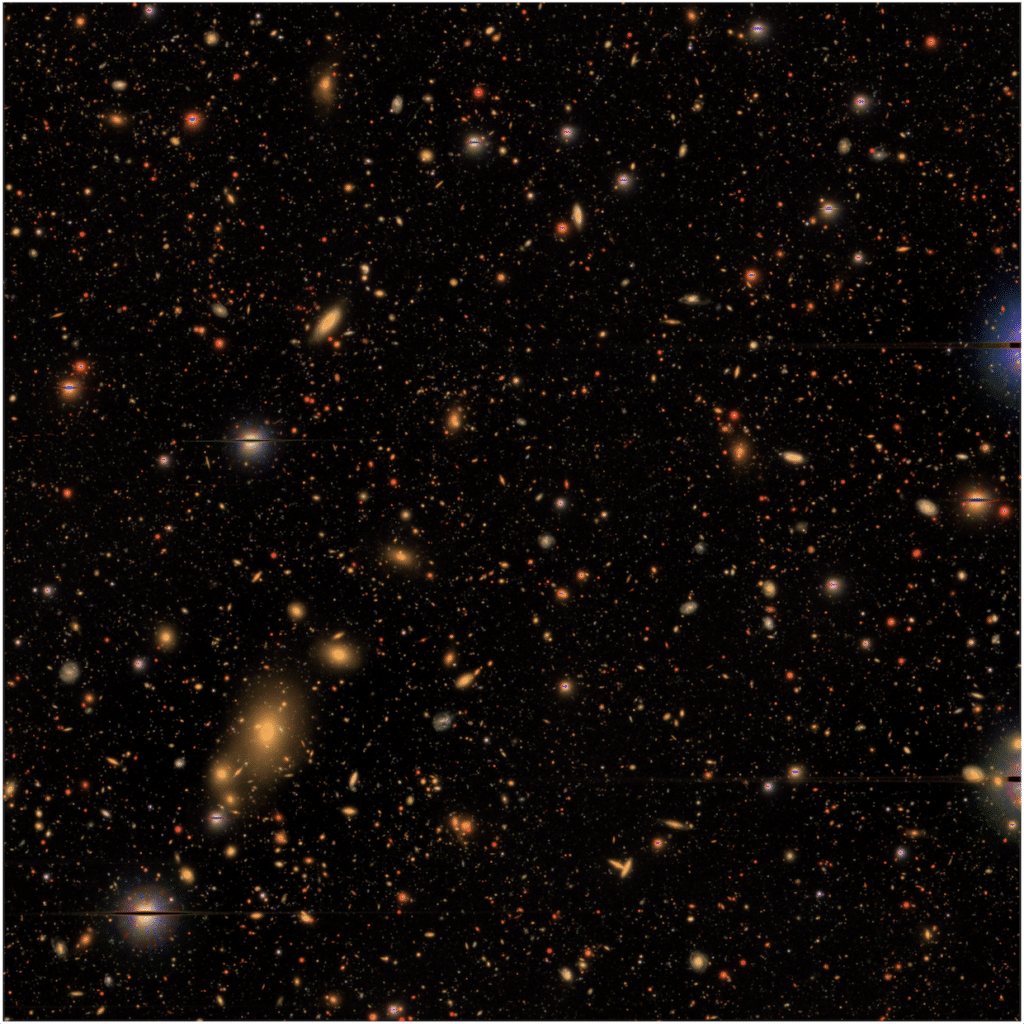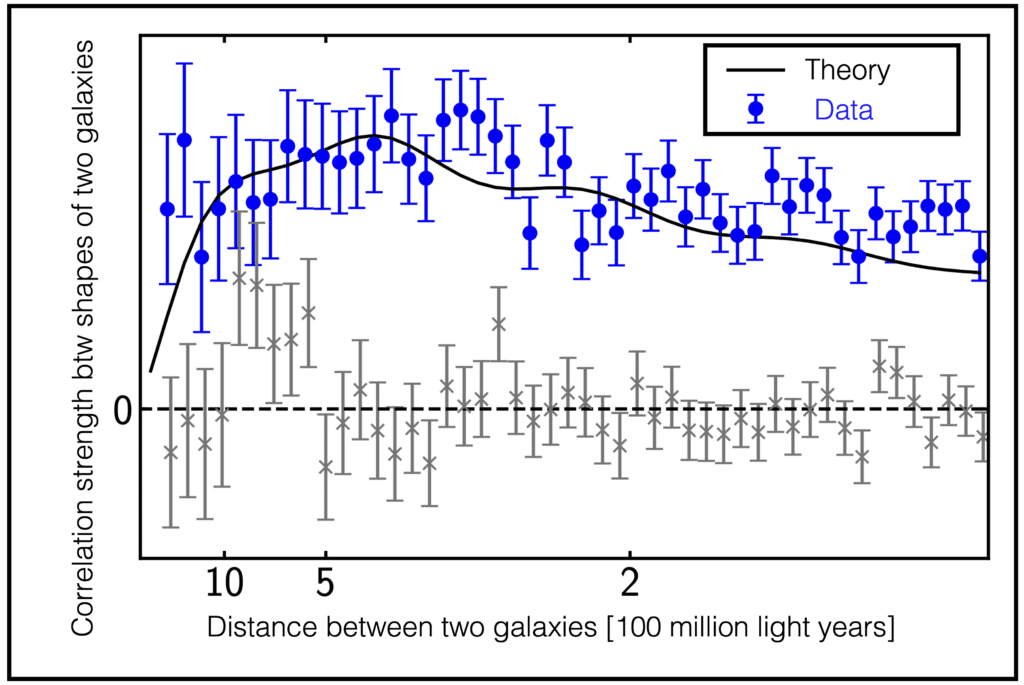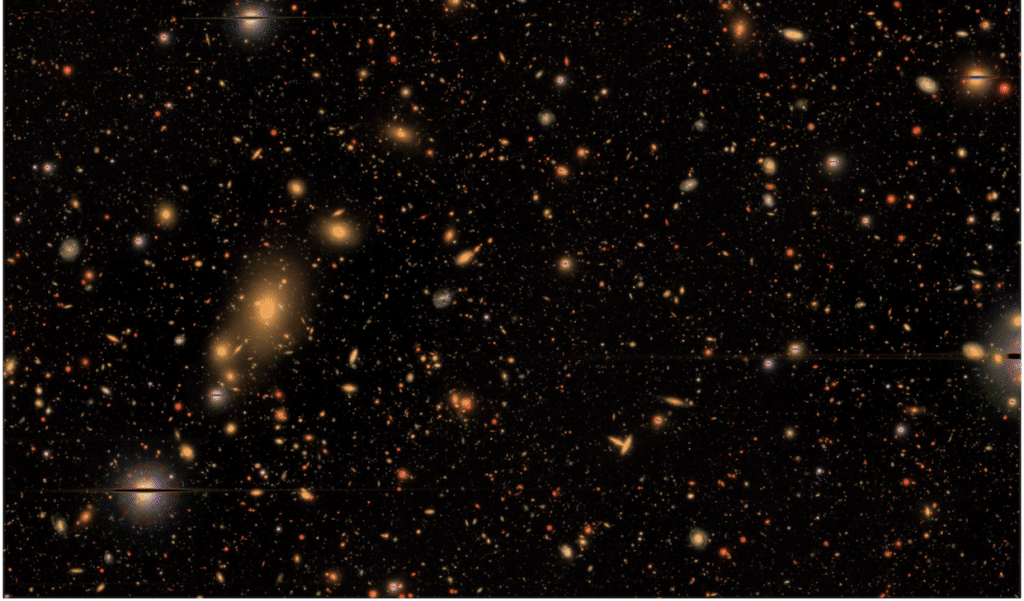A team of physicists has turned to an unusual source of data in their quest to peer back to the earliest moments of the universe’s existence: maps of hundreds of thousands of galaxies across the night sky. By statistically analyzing the shapes and orientations of these galaxies, the researchers are trying to detect subtle fingerprints left on the cosmos from its first fleeting moments after the Big Bang.
To better grasp the research, it’s first important to have an understanding of primordial fluctuations, which are tiny variations in the density of the universe that existed shortly after the Big Bang. These fluctuations are thought to be the seeds from which all the structures in the universe, such as galaxies, stars, and clusters of galaxies, have grown.
The most direct evidence for primordial fluctuations comes from observations of the Cosmic Microwave Background (CMB). The CMB is the afterglow of the Big Bang, and it shows tiny temperature fluctuations that correspond to the density fluctuations in the early universe. By studying the CMB, scientists have been able to map these primordial fluctuations, giving us a picture of the universe as it was about 380,000 years after the Big Bang.
At the heart of this study lies the ΛCDM model, a cornerstone in our understanding of the universe. This model integrates two pivotal concepts: cold dark matter (CDM) and dark energy (the cosmological constant, Λ). It proposes that tiny primordial fluctuations, under the influence of gravity, grew and coalesced into dark matter halos. These halos then collided and merged, giving birth to the celestial objects we observe today.

The spatial distribution of galaxies is not a random occurrence but a reflection of these primordial fluctuations. To understand these origins, researchers have turned to statistical analyses of how galaxies are spread across the universe. Adding a new dimension to this analysis, the team, led by Toshiki Kurita (then a graduate student at Kavli IPMU, now a postdoctoral researcher at the Max Planck Institute for Astrophysics) and Professor Masahiro Takada of Kavli IPMU, developed a novel method to measure the power spectrum of galaxy shapes.
This method combines data on the spatial distribution of galaxies with imaging data of individual galaxy shapes. By doing so, it offers a fresh perspective on the primordial fluctuations. The researchers analyzed approximately one million galaxies from the Sloan Digital Sky Survey (SDSS), the largest galaxy survey to date. Their findings revealed a significant alignment in the orientations of galaxy shapes, even over distances exceeding 100 million light years.
“In this research, we were able to impose constraints on the properties of the primordial fluctuations through statistical analysis of the ‘shapes’ of numerous galaxies obtained from the large-scale structure data,” Kurita says in a statement. “There are few precedents for research that uses galaxy shapes to explore the physics of the early universe, and the research process, from the construction of the idea and development of analysis methods to the actual data analysis, was a series of trial and error. Because of that, I faced many challenges. But I am glad that I was able to accomplish them during my doctoral program. I believe that this achievement will be the first step to open up a new research field of cosmology using galaxy shapes.”

The study’s detailed examination of these correlations aligns with the predictions of inflation theory, a key concept in cosmology that describes the rapid expansion of the universe following the Big Bang. Significantly, these correlations did not exhibit non-Gaussian features, lending further support to the standard inflationary model.
“This research is the result of [Kurita’s] doctoral dissertation. It’s a wonderful research achievement in which we developed a method to validate a cosmological model using galaxy shapes and galaxy distributions, applied it to data, and then tested the physics of inflation. It was a research topic that no one had ever done before, but he did all three steps: theory, measurement, and application. Congratulations! I am very proud of the fact that we were able to do all three steps,” says a very proud Takada.
“Unfortunately, I did not make the great discovery of detecting a new physics of inflation, but we have set a path for future research,” he adds. “We can expect to open up further areas of research using the Subaru Prime Focus Spectrograph.”
While the team did not discover new physics of inflation, their methods and results pave the way for future explorations into the inflation theory. This study not only stands as a testament to the perseverance and ingenuity of its researchers but also opens new avenues for understanding the universe’s earliest moments.
The team’s research is published in the journal Physical Review D.












